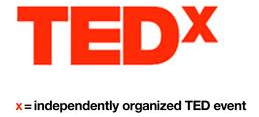 I read an interesting story written by Deborah Grayson Riegel, who was giving a presentation at the Bronx zoo. In addition to her human audience, there were 20 monkeys outside with their faces pressed against the window, watching her presentation. Each time she advanced her PowerPoint slide, the monkeys would bang their fists against the window. Eventually, she had to let go of her PowerPoint presentation, and stopped changing the slides altogether.
Most of us are not going to be speaking at the zoo, but we will have our own monkeys to deal with - the usual cast of characters known as a difficult audience - hecklers, people causing distractions, zoning out, and generally interrupting your presentation. It's important to be flexible and work with your audience.
I read an interesting story written by Deborah Grayson Riegel, who was giving a presentation at the Bronx zoo. In addition to her human audience, there were 20 monkeys outside with their faces pressed against the window, watching her presentation. Each time she advanced her PowerPoint slide, the monkeys would bang their fists against the window. Eventually, she had to let go of her PowerPoint presentation, and stopped changing the slides altogether.
Most of us are not going to be speaking at the zoo, but we will have our own monkeys to deal with - the usual cast of characters known as a difficult audience - hecklers, people causing distractions, zoning out, and generally interrupting your presentation. It's important to be flexible and work with your audience.
Speaking of monkeys... someone recently threw a monkey wrench into my half day presentation training workshop, which was scheduled from 1:00 - 4:00pm. We were told that four of the participants had to leave by 2:30. The program was designed to build speaking skills so the speakers would be prepared to give their final presentations at the end of the workshop. We had to do a quick redesign on the spot - in 5 minutes. My partner and I huddled and came up with a plan. The goal was to give each participant the opportunity to present, leave on time, and still gain enough learning to succeed in their next presentation. It worked.
In public speaking, as in life, we always need a backup plan. Deborah had no choice - the monkeys forced her to stop using PowerPoint. Your audience may be more subtle, but good public speakers pick up the nuances and can change in a moment to better serve their listeners. Technology will fail. And an audience can quickly tune out. We need to be able to go where the current is taking us. That's the mark of a professional speaker.

 TED.com
TED.com  When I first started out in my speaking business, I was hired by American Management Association to give public seminars in public speaking and presentation skills.
One day, the program director sent around a memo stating that all AMA presenters were expected to arrive early to the class. It was not acceptable to show up at 9:00 a.m. What? Who would do that? I always arrived an hour early.
When I first started out in my speaking business, I was hired by American Management Association to give public seminars in public speaking and presentation skills.
One day, the program director sent around a memo stating that all AMA presenters were expected to arrive early to the class. It was not acceptable to show up at 9:00 a.m. What? Who would do that? I always arrived an hour early.
 Josephine "Jody" Prestovino single-handedly brought missing federal supplies to Staten Island, New York by using her voice. Jody lost her home during hurricane Sandy and spoke on behalf of her own community with no media training. She looked directly at the camera and said, "Obama promised to cut through the red tape, but we've seen nothing. Nobody is here."
It's because she spoke with conviction and passion that she had an impact.
Josephine "Jody" Prestovino single-handedly brought missing federal supplies to Staten Island, New York by using her voice. Jody lost her home during hurricane Sandy and spoke on behalf of her own community with no media training. She looked directly at the camera and said, "Obama promised to cut through the red tape, but we've seen nothing. Nobody is here."
It's because she spoke with conviction and passion that she had an impact. The first presidential debate on October 3, 2012 belongs to Mitt Romney. It was a clear win in terms of content and delivery. Both candidates began cordially and gracefully. The President acknowledged his wife on the evening of their 20th anniversary. Mitt Romney also congratulated him and quipped about how Obama probably didn't want to spend a romantic evening on stage with him.
Both candidates are skilled public speakers. They each looked presidential but Romney owned the room with his rapid fire responses, his knowledge of the facts, and his aggressive approach. He seemed more relaxed and natural and was finally able to humanize his image by talking about people he had met on the campaign trail and correcting any inaccuracies about his policies. What was especially effective was his ability to speak crisply as he quickly enumerated three to four points he wanted to make. He made direct eye contact with Obama and his passion was evident. Gone was his robotic delivery.
The first presidential debate on October 3, 2012 belongs to Mitt Romney. It was a clear win in terms of content and delivery. Both candidates began cordially and gracefully. The President acknowledged his wife on the evening of their 20th anniversary. Mitt Romney also congratulated him and quipped about how Obama probably didn't want to spend a romantic evening on stage with him.
Both candidates are skilled public speakers. They each looked presidential but Romney owned the room with his rapid fire responses, his knowledge of the facts, and his aggressive approach. He seemed more relaxed and natural and was finally able to humanize his image by talking about people he had met on the campaign trail and correcting any inaccuracies about his policies. What was especially effective was his ability to speak crisply as he quickly enumerated three to four points he wanted to make. He made direct eye contact with Obama and his passion was evident. Gone was his robotic delivery. The political stage is a fascinating study of the power of the presentation. When it comes to public speaking and
The political stage is a fascinating study of the power of the presentation. When it comes to public speaking and Last night I was a guest speaker for ABWA. My presentation was Speak Powerfully Sell More: Speak Your Way to More Business.
One woman in the audience asked a question about how to handle a celebrity who is hired to speak and doesn't deliver. This woman went on a rant about how many of these celebrities are not good speakers and yet meeting planners continue to hire them. I explained that the reason for that was event planners want to sell tickets. An event will sell out when the keynote speaker is a celebrity.
Last night I was a guest speaker for ABWA. My presentation was Speak Powerfully Sell More: Speak Your Way to More Business.
One woman in the audience asked a question about how to handle a celebrity who is hired to speak and doesn't deliver. This woman went on a rant about how many of these celebrities are not good speakers and yet meeting planners continue to hire them. I explained that the reason for that was event planners want to sell tickets. An event will sell out when the keynote speaker is a celebrity. Mitt Romney was invited to speak to the NAACP knowing that it's members are overwhelmingly Democratic. He acknowledged and thanked his hosts and expressed his honor at being invited.
He made an attempt at humor by saying “I hope the Obama campaign doesn’t think you’re playing favorites.“ There was a mild tittering from the crowd.
Mitt Romney was invited to speak to the NAACP knowing that it's members are overwhelmingly Democratic. He acknowledged and thanked his hosts and expressed his honor at being invited.
He made an attempt at humor by saying “I hope the Obama campaign doesn’t think you’re playing favorites.“ There was a mild tittering from the crowd.


